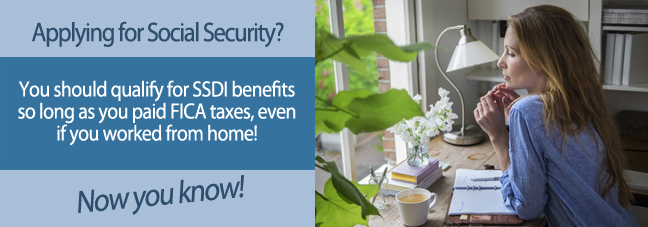If you become disabled as a self-employed person, you can potentially qualify for benefits through one of both of the Social Security Administration’s (SSA’s) disability programs. You’ll need to understand more about the disability determination process and the technical eligibility rules before applying though.
Medically Qualifying for Benefits
To receive disability, you must have a severe impairment, documented through acceptable medical evidence. The SSA maintains standard disability listings in the Blue Book.
This manual outlines evidence requirements and severity level measures for each listing. If you meet a listing, you’re medically eligible, but even if you don’t meet a disability exactly, you can potentially qualify by matching a listed condition as a “severity level equivalency.”

It’s also possible to be approved for benefits without meeting or matching any Blue Book listing. You’ll have to prove through a Residual Functional Capacity (RFC) analysis that your medical condition so severely limits you that you’re unable to get and maintain a job, however.
SSI Benefits and Financial Eligibility
Work history or self-employed status has no baring whatsoever on SSI eligibility, because this disability program is need-based. If you meet the medical requirements for approval and you have limited income and financial assets, then you may be approved for SSI.
SSDI and Self-Employment Taxes
SSDI is an insurance program and workers pay their insurance premiums by paying FICA taxes. FICA includes Social Security and Medicare and when employed by a company, these taxes are usually withheld automatically from each paycheck. When you’re self-employed though, you’re responsible for submitting your FICA taxes yourself. You do this by submitting estimated self-employment taxes or by paying self-employment tax balances when you file your annual income tax return.
FICA Taxes and Work Credits
You must additionally have a recent work history and between 20 and 40 work credits to qualify for SSDI. Work credits accumulate as you pay FICA and the number of credits necessary is based on your age at the time you become disabled. Between one quarter and one half of your credits must also be from the last 10 years, again based on your age at disability onset.
The amount of income necessary for one work credit changes over time, but in 2016 you earn one credit for each $1,260 of taxable income, up to a maximum of four credits. You must therefore have at least $5,040 in annual income on which you pay self-employment taxes to get four credits added to your work record.
Applying for Social Security Benefits
SSDI and SSI have separate application processes, though you can complete both by visiting your local SSA office. SSDI application is also available online.
Before applying, you can sign up for My Social Security and review your personalized Social Security Statement to verify the number of work credits you have available. A Social Security attorney or advocate can also assist you in preparing for and applying for benefits and help you file an appeal, if you’re initially denied disability.